Remote controlled WiFi socket with power measurement - Piri
(Sponsored) Piri made it available to us for testing remote controlled socket WiFi 2.4GHz to measure the power consumed by the connected device. In the video you will find the results of the socket tests, we will also take a look inside the housing.
The control of switching on the connected device and the reading of power consumption is possible thanks to the smartphone application: Piri smart home .
The socket is compact and ready to use out of the box, it can switch powers up to 3kW, while the application guides you through the process of connecting to your home WiFi network. We set up an account in the operator's cloud in the application using the e-mail address we have. We put the device into pairing mode by holding the button for 5s, then the LED will start flashing quickly. In order for the application to connect the socket to our WiFi network, broadcasting of the network SSID should be started on the AP, and the socket's MAC must be on the list of devices allowed to connect to our WiFi AP.
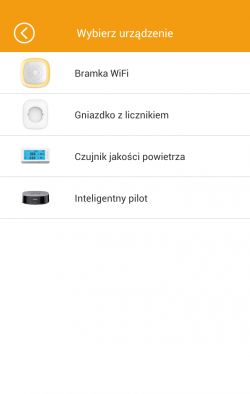
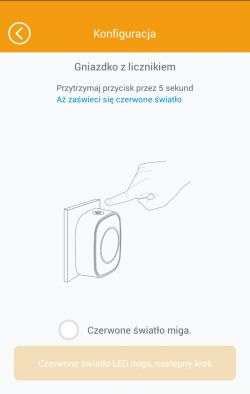
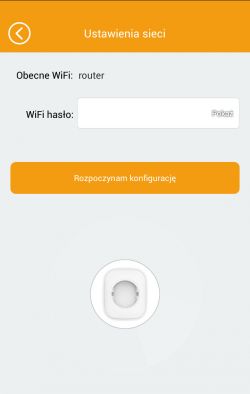
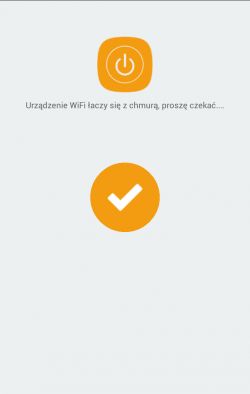
DEVICE CONTROLS
We can control the device connected to the socket:
- manually with a button on the socket housing,
- from anywhere in the world where we have access to the Internet, using the application on a smartphone,
-using schedules of switching on and off, as well as a timer configured by the application.
The schedules set in the application are launched in the operator's cloud and the socket will be switched regardless of whether our smartphone and application have an internet connection. The condition for remote control of the socket is its continuous connection to the Internet.
OPERATION AND CONSTRUCTION OF THE NEST:
The application is convenient to use, but minor adjustments would be needed, e.g. polonization of messages in the operation log and increasing the resolution of measurement points on the time axis.
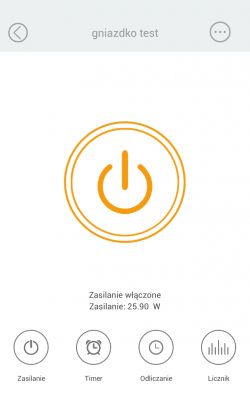
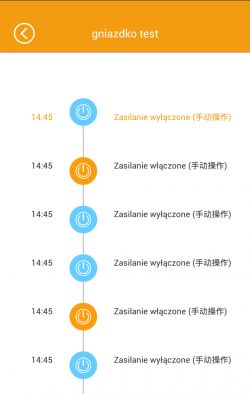
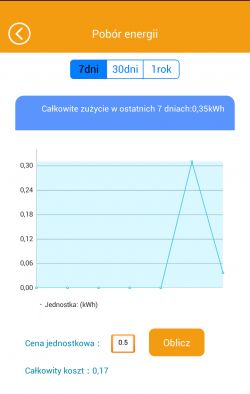
It is worth taking a look at the Piri YT channel, you will find there materials about both the WiFi socket and, for example, a wireless camera:
https://www.youtube.com/watch?v=q1VYP0bVcg8
The socket, when powered by ~230.8VAC, consumes 3.14mA with the relay off and 6.73mA with WiFi activity, while 9.44mA with the relay on and 11.64mA with WiFi activity.
Comparison of the indications of the device with the bulb connected is 158W in the application on the smartphone and 148W from the indications of the connected multimeters.
Connecting the iron gave an indication in the application of 1092W, multimeter indications are 1013W.
Connecting a 1uF capacitor gave an indication of 0W, while the ammeter indicated 73mA way to go! the socket actually indicates active power .
A PF (power factor) measurement would also be useful.
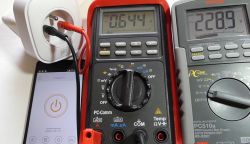
We look inside the socket and the thoughtful compact design immediately catches the eye. It is easy to locate the measuring resistor and the WiFi module.
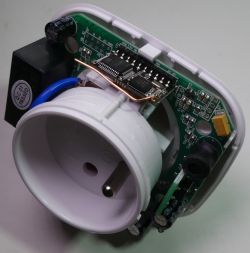

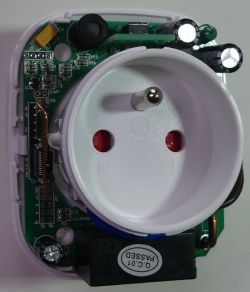
The WiFi module is based on the Mediatek MT5931 chip (802.11n 2.4HGz) and ARM MC101, after a while of searching you can find information about the module in the network: Micro UART To WiFi Module . The WiFi antenna is made in the form of a wire section - there is room for development in the direction of a PCB or ceramic antenna.
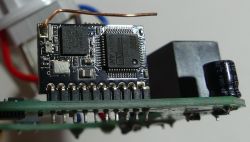
On the board you will find a 250V/16A relay controlling the connected device, a switching power supply based on the LNK306N, the HLW8012 power measurement system and the STM8 8S003FP6 microcontroller. More about the power measurement system can be found, for example, here: HLW8012 .
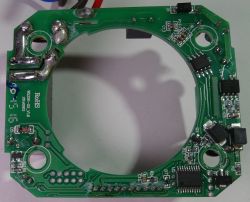

Where do you see a use for a remote-controlled WiFi socket with power measurement?
Personally, I see an application in the control of electric heating and air conditioning (provided that the air conditioner will start after powering up). Power metering can help you optimize your energy costs, while remote control and scheduling can help you stay in control of your connected device. During an unexpected change in the weather or when plans change, the socket could turn on the heating or air conditioning and prepare the house for our return.
There are days when such a socket would be useful to run an overflow coffee machine in the kitchen, when the alarm clock in the bedroom does not let us sleep
- of course, you should properly "arm" such a coffee machine the day before ...
An interesting development of the design would be the possibility of indicating in the application, apart from active power/energy, other parameters, e.g. power factor, mains voltage, current consumed by the receiver, counting inductive and capacitive reactive energy. Even if the values were approximate as in simple energy meters: measurement of active, reactive and apparent power that would be an interesting feature. Perhaps such functionality can be added by changing the firmware and by expanding the application?
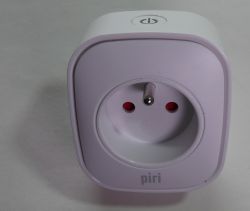
We tested before wireless outdoor WiFi camera also shared by Piri.
[ADVERTISING COLLABORATION]
The control of switching on the connected device and the reading of power consumption is possible thanks to the smartphone application: Piri smart home .
The socket is compact and ready to use out of the box, it can switch powers up to 3kW, while the application guides you through the process of connecting to your home WiFi network. We set up an account in the operator's cloud in the application using the e-mail address we have. We put the device into pairing mode by holding the button for 5s, then the LED will start flashing quickly. In order for the application to connect the socket to our WiFi network, broadcasting of the network SSID should be started on the AP, and the socket's MAC must be on the list of devices allowed to connect to our WiFi AP.




DEVICE CONTROLS
We can control the device connected to the socket:
- manually with a button on the socket housing,
- from anywhere in the world where we have access to the Internet, using the application on a smartphone,
-using schedules of switching on and off, as well as a timer configured by the application.
The schedules set in the application are launched in the operator's cloud and the socket will be switched regardless of whether our smartphone and application have an internet connection. The condition for remote control of the socket is its continuous connection to the Internet.
OPERATION AND CONSTRUCTION OF THE NEST:
The application is convenient to use, but minor adjustments would be needed, e.g. polonization of messages in the operation log and increasing the resolution of measurement points on the time axis.



It is worth taking a look at the Piri YT channel, you will find there materials about both the WiFi socket and, for example, a wireless camera:
https://www.youtube.com/watch?v=q1VYP0bVcg8
The socket, when powered by ~230.8VAC, consumes 3.14mA with the relay off and 6.73mA with WiFi activity, while 9.44mA with the relay on and 11.64mA with WiFi activity.
Comparison of the indications of the device with the bulb connected is 158W in the application on the smartphone and 148W from the indications of the connected multimeters.
Connecting the iron gave an indication in the application of 1092W, multimeter indications are 1013W.
Connecting a 1uF capacitor gave an indication of 0W, while the ammeter indicated 73mA way to go! the socket actually indicates active power .
A PF (power factor) measurement would also be useful.

We look inside the socket and the thoughtful compact design immediately catches the eye. It is easy to locate the measuring resistor and the WiFi module.



The WiFi module is based on the Mediatek MT5931 chip (802.11n 2.4HGz) and ARM MC101, after a while of searching you can find information about the module in the network: Micro UART To WiFi Module . The WiFi antenna is made in the form of a wire section - there is room for development in the direction of a PCB or ceramic antenna.

On the board you will find a 250V/16A relay controlling the connected device, a switching power supply based on the LNK306N, the HLW8012 power measurement system and the STM8 8S003FP6 microcontroller. More about the power measurement system can be found, for example, here: HLW8012 .


Where do you see a use for a remote-controlled WiFi socket with power measurement?
Personally, I see an application in the control of electric heating and air conditioning (provided that the air conditioner will start after powering up). Power metering can help you optimize your energy costs, while remote control and scheduling can help you stay in control of your connected device. During an unexpected change in the weather or when plans change, the socket could turn on the heating or air conditioning and prepare the house for our return.
There are days when such a socket would be useful to run an overflow coffee machine in the kitchen, when the alarm clock in the bedroom does not let us sleep
- of course, you should properly "arm" such a coffee machine the day before ...
An interesting development of the design would be the possibility of indicating in the application, apart from active power/energy, other parameters, e.g. power factor, mains voltage, current consumed by the receiver, counting inductive and capacitive reactive energy. Even if the values were approximate as in simple energy meters: measurement of active, reactive and apparent power that would be an interesting feature. Perhaps such functionality can be added by changing the firmware and by expanding the application?

We tested before wireless outdoor WiFi camera also shared by Piri.
[ADVERTISING COLLABORATION]



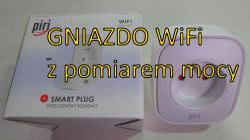
Comments
The downside in such devices is that they cover two sockets, and in triple ones, 3 sockets. [Read more]
It is a pity that it is not possible to control via the website. [Read more]
This socket does not cover two sockets the socket is 78mm high and 67mm wide Standard frame for the socket is 86 mm, in the case of frames where several sockets are installed, the area for the socket... [Read more]
Is there a chance that in the future firmware / application update will add voltage, current and PF measurement functions? If you have ideas for additional tests and trials, you can write in the topic,... [Read more]
I suggest checking: 1. Will the socket remember the settings after programming the timer and a power failure in the mains? 2. As above, except that there is no wi-fi after power is restored [Read more]
quick research and it looks like the uC + radio module is http://www.hi-flying.com/hf-lpt100. For me, the basic information is: Is there an alternative, open firmware that will allow you to integrate with... [Read more]
@sunday according to the module description, it is "UART to Wi-Fi", i.e. it is very possible that all the logic sits in the ST microcontroller. I think it will be difficult to use anything other than... [Read more]
@TechEkspert thanks for taking the tests. The results surprise positively, because I was wondering if the socket would lose the settings after the restart. As you can see, it doesn't get lost. It... [Read more]
I do not really understand. Since there is a microcontroller, the firmware can probably be uploaded to it. The more that it is based on the ARM core. You just need to find a Cossack to write it. Anybody?... [Read more]
It is probably easier to design such a device by yourself from "0" than to play in such combinations. [Read more]
There is no need to reinvent the wheel. There are already devices of this type that you can program according to your preferences. Working from cover to cover. [Read more]
@Szyszkownik Kilkujadek the fact that the socket synchronized after restarting via WiFi is of course on +, I was more surprised that the programmed sequence of switching on and off was performed after... [Read more]
The relay is poorly visible, but it seems to me that only one wire disconnects the socket (the relay has one contact)? If so, there is a risk that the disconnected device will still be live to earth. ... [Read more]
Nice, beautiful, but the price of PLN 169 discredits this device in my "intelligent apartment". Sonoff POW is cheaper, and the option of an all-plug instead of a box on the cable is not worth overpaying... [Read more]
I walked around it like around a hedgehog. Today I read a bit and thank you for pointing this out. Well, after uploading an alternative software, we have access via HTTP. This is very essential for any... [Read more]
@Erbit it looks like one contact is disconnecting. Maybe there is a chance to present the solution you did in Articles , measurement and control are one thing, the description shows that you have... [Read more]
Unfortunately, this is a problem for all solutions known to me (which does not mean that I know all the solutions). Unfortunately, I am not the author of the solutions I use. I am only the originator... [Read more]
For comparison, for PLN 49 in Biedronka you can buy a WiFi socket, but without timers. Only on / off. [Read more]
Just put such a clever socket in one of the end sockets on a wall or strip and they will never obstruct more than two. I see a more serious problem: If the condition of work is constant access to the... [Read more]